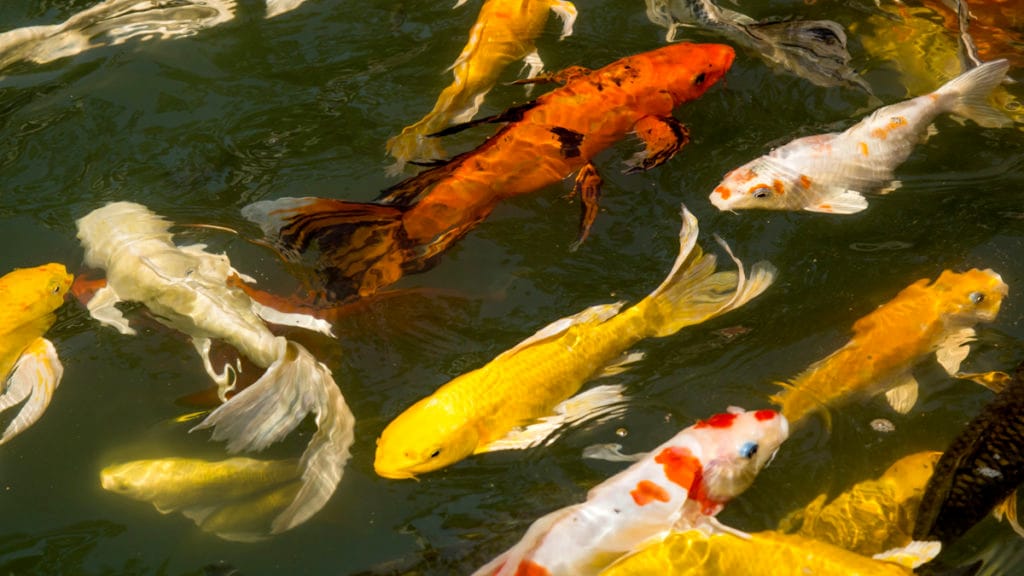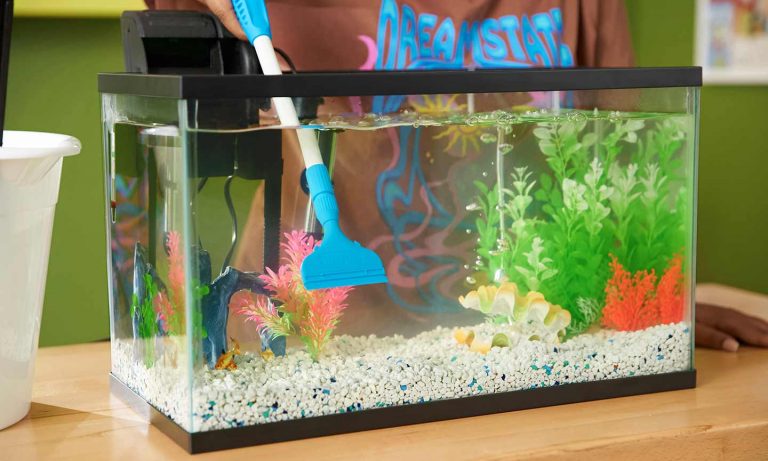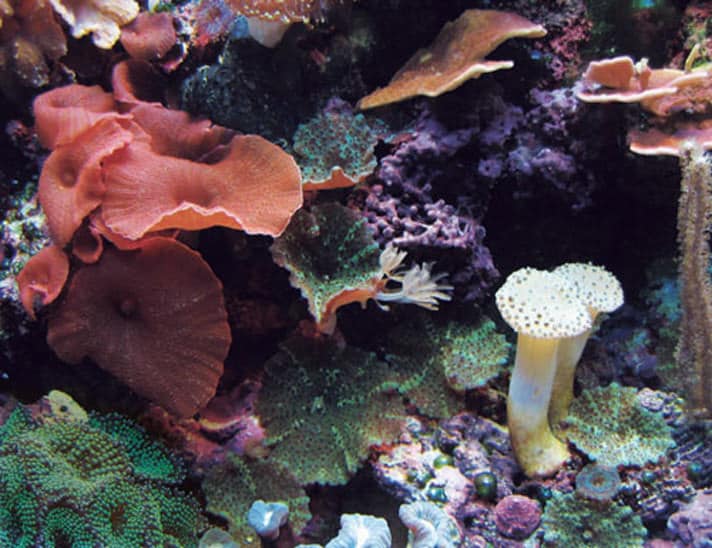Essential Garden Pond Care Tips
Dreaming of getting your zen on as you laze beside your garden pond this summer, watching the fish swim to and fro? Well, then it’s time to get to work now.
“Winter is a hard time for both fish and plants. So many different materials have blown into your pond and accumulated during the cold-weather months,” says Gary Jones, research and development manager for Mars Fishcare. “So, spring is the best time to clean and inspect your pond.”
The goal is to have pond water clear and free of algae, where your pond plants can bloom and your finned friends can flourish. Follow this guide on pond maintenance to help turn your garden pond into a backyard oasis full of happy pond fish.
How to Clean Your Garden Pond
To clean your pond, begin by skimming off all the leaves and debris with a net.
Once the excess debris is removed, Jones recommends draining about 15-25 percent of the water in the pond to be replaced with new water later.
After draining a portion of the pond water, you can start to remove the sludge and debris that has accumulated on the bottom of your pond.
Next, clean out your filters and pumps and check that they are operating properly. If you had to shut them off during the winter months, turn them back on now. Once they are back on, you may notice that it disturbs the bottom of the pond and causes cloudy water conditions. This is normal, but you can use API PondCare Accu-Clear Clarifier, which works as a coagulant for debris. In other words, it causes dirt and debris particles to clump together and be caught in the filter or sink to the bottom for collection and cleanup.
To help keep your pond water clean, you can use API Pond-Zyme Sludge Destroyer as an easy way to break down pond waste. This product will help maintain clear pond water and prevent organic material buildup that clogs pumps and filters. You just dose your water once during your spring cleaning, and then once every two weeks for maintenance.
Once the sludge and debris is removed, refill the pond with tap water. Plain tap water is hazardous to fish, so a water conditioner is necessary. API Pond Stress Coat Water Conditioner will remove chlorine, chloramines and ammonia, and neutralize heavy metals, to make water safe for your pond fish. It also helps create a synthetic slime coating on the fish that will help to protect them from disease and infection. This is especially important during the spring breeding season, climate changes and changes to their pond.
“Fish have used their body fats to sustain themselves during the winter months when they don’t eat,” Jones explains. “To help them restore their slime coating, which helps them combat disease, add in a water treatment like API Pond Stress Coat.”
Test Your Pond Water
To make sure that your water is safe and healthy for your fish, it is always smart to measure the pH, ammonia, nitrite and phosphate levels. To do this, you can use a water testing kit, like the API Pond Master Test Kit. Regular water testing is the only way to protect the health of all pond life from deteriorating water conditions. So, test—don’t guess. The API Pond Master Kit is easy to use and gives you all the information needed to correct unsafe conditions.
Another reason to test your water is to keep algae at bay. Algae grows best in stagnant ponds or in water that is rich in nitrogen and phosphorus or dirty from fish waste and food. If your pond is turning green or you see slime on the rocks, you’ve got algae and you need to get rid of it fast. API Pond Algaefix Algaecide can help keep algae under control without harming your plants or fish.
Help Your Pond Fish Transition to Warmer Weather
As the weather gets warmer, and the water temperature approaches 70 degrees Fahrenheit, you’ll want to switch over to a fish food with higher protein levels, Jones suggests. The higher protein levels are needed to support an increase in activity as well as help them rebuild their slime coat.
As the water temperature in the pond approaches 42 degrees Fahrenheit, you can start feeding your fish a food designed for colder temperatures. Jones suggests a food that is easily digestible and high in carbohydrates while low in protein.
It is also important that you add pond salt to your pond during the spring (or during any significant water change), Jones advises. API Pond Salt adds essential electrolytes into the water, which help to reduce stress and improve gill function in pond fish as well as protect against toxic nitrites.
“API Pond Salt is a natural fish tonic that provides electrolytes to the fish that are essential to their health,” Jones says. “However, you only need to add it to your water during big water changes or in the springtime.”
Check Out Your Greenery
Ideally, you want plants that provide shade for at least half the pond to keep the water cool enough for your pond fish to thrive. To make sure that your plants bloom and stay healthy throughout the spring and summer seasons, you will want to repot plants that have been in the same pot for more than two years. Be careful not to overcrowd plants, as overcrowded plants can’t bloom as well and won’t provide maximum shade for your fish. Bring your tropical plants out as the nights get warmer and the threat of frost has passed.
To keep plants like water lilies and pickerel rush blooming all season long, use a clean, fish-friendly potting soil like API Aquatic Plant Media. You can also keep your plants lush by adding API Pond Aquatic Plant Food tablets into each pot.
Add in Bacteria
Although it sounds paradoxical, the right kind of bacteria can keep your pond pristine. Beneficial bacteria break down sludge, dead algae and fish waste, reducing unwanted organics from the water. This reduces maintenance and keeps your pond filter system working properly. The result: crystal-clear pond water and disease-free fish. You can continue using API Pond-Zyme Sludge Destroyer after your initial cleaning, or you can use API Pond Ecofix Sludge Destroyer; both are designed to minimize sludge and keep your pond water clear.
Keeping Up With Maintenance
Now that you’ve cleaned your garden pond and repotted your greenery, you’ll want to do monthly partial water changes to make sure your hard work pays off during the warm-weather months. A 10 percent water change once a month will help to keep your fish and plants healthy, Jones says. (The more fish you have, the more water you’ll want to change out.) That means draining out some of the old water and replacing it with the same amount of tap water. (Don’t forget to treat the new water with a water conditioner.)
Share:













